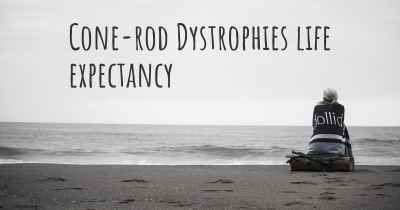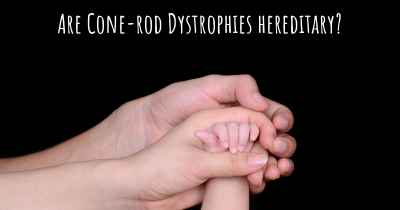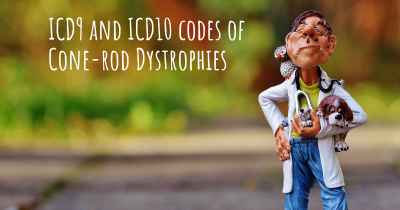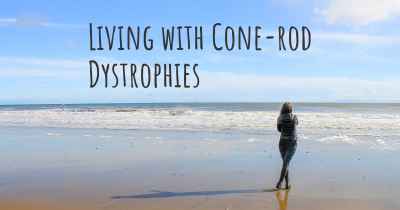Is it advisable to do exercise when affected by Cone-rod Dystrophies? Which activities would you suggest and how intense should they be?
See if it is advisable for people with Cone-rod Dystrophies to practice sports and which ones are the most recommended if you have Cone-rod Dystrophies
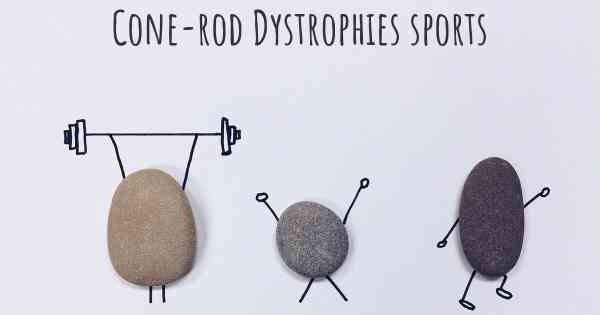
Is it advisable to do exercise when affected by Cone-rod Dystrophies?
Cone-rod dystrophies (CRDs) are a group of inherited eye disorders that primarily affect the cone and rod cells in the retina. These cells are responsible for vision in bright and dim light, respectively. As CRDs progress, individuals may experience vision loss, color vision abnormalities, and decreased visual acuity.
When it comes to exercise and CRDs, it is important to consider the individual's specific condition and consult with a healthcare professional or ophthalmologist. While exercise can have numerous benefits for overall health and well-being, it is crucial to adapt activities to accommodate the visual impairments associated with CRDs.
Benefits of Exercise for Individuals with CRDs
Engaging in regular exercise can provide several benefits for individuals affected by CRDs:
- Improved cardiovascular health: Exercise can help maintain a healthy heart and improve blood circulation, which is important for overall well-being.
- Enhanced mood and mental health: Physical activity releases endorphins, which can boost mood and reduce symptoms of depression and anxiety.
- Weight management: Regular exercise can help maintain a healthy weight, which is important for overall health and can reduce the risk of developing other health conditions.
- Increased energy levels: Engaging in physical activity can improve energy levels and reduce fatigue, enhancing overall quality of life.
- Improved balance and coordination: Certain exercises can help improve balance and coordination, which can be beneficial for individuals with visual impairments.
Recommended Exercises for Individuals with CRDs
While the specific exercise regimen should be tailored to the individual's abilities and preferences, here are some activities that may be suitable for individuals affected by CRDs:
- Low-impact aerobic exercises: Activities such as walking, swimming, or using an elliptical machine can provide cardiovascular benefits without putting excessive strain on the joints.
- Strength training: Light to moderate strength training exercises using resistance bands or light weights can help maintain muscle strength and overall fitness.
- Balance and flexibility exercises: Yoga, tai chi, or specific balance exercises can improve stability and reduce the risk of falls.
- Low-vision sports: Some individuals with CRDs may be able to participate in sports specifically designed for individuals with visual impairments, such as goalball or beep baseball.
Intensity and Safety Considerations
When engaging in exercise with CRDs, it is important to consider the following:
- Start slowly: Begin with low-intensity exercises and gradually increase the duration and intensity as tolerated.
- Listen to your body: Pay attention to any discomfort or pain during exercise and adjust accordingly. If any exercise causes strain or exacerbates symptoms, it should be modified or avoided.
- Work with a professional: Consulting with a healthcare professional, such as a physical therapist or exercise specialist, can help develop a personalized exercise plan and ensure proper form and technique.
- Use appropriate aids: Individuals with CRDs may benefit from using assistive devices, such as magnifiers or talking pedometers, to enhance safety and accessibility during exercise.
- Consider environmental factors: Ensure the exercise environment is well-lit and free from hazards to minimize the risk of accidents or injuries.
Conclusion
While exercise can provide numerous benefits for individuals affected by CRDs, it is essential to adapt activities to accommodate visual impairments and consult with healthcare professionals. Engaging in regular exercise, tailored to individual abilities and preferences, can contribute to improved cardiovascular health, enhanced mood, weight management, increased energy levels, and improved balance and coordination. By following safety considerations and working with professionals, individuals with CRDs can incorporate exercise into their lifestyle and enjoy the associated benefits.
